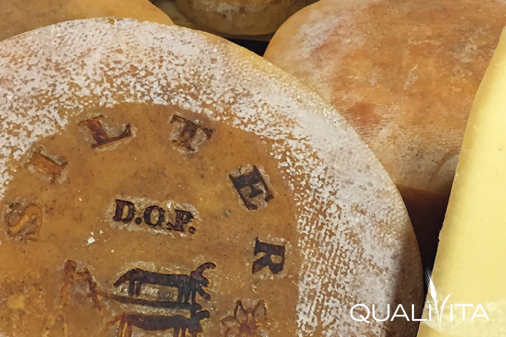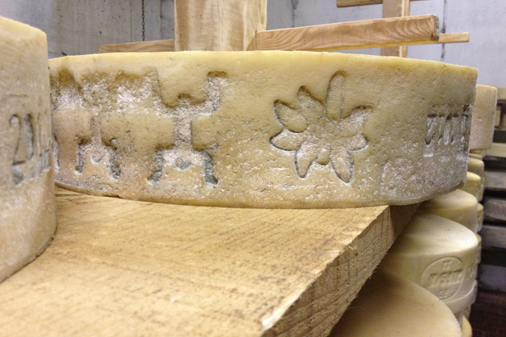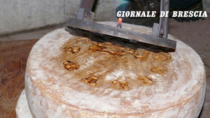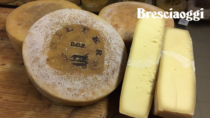Description
Silter PDO is a hard cow’s cheese made with raw milk that is ripened for at least 100 days. It is produced with cow’s milk of which at least 80% must come from the following breeds: Grigio Alpina, Pezzata Rossa and Bruna. The latter must represent at least 60% of the lactating cows present on each individual farm.
Production Area
The production area of Silter PDO comprises the entire administrative territory of the municipalities in the Province of Brescia that are in the Mountain Communities of Valle Camonica and Sebino Bresciano, in the Lombardy region.
Production Method
Silter PDO is produced with raw cow’s milk from one or more milkings. The qualitative characteristics of the milk are given to the cows’ diet, which consists of at least 50% fodder originating from the production area. The milk is partially skimmed in vats for a period of between 8 and 48 hours. The milk is then heated in a boiler, after which calf rennet is added and the mixture is left to curdle. This is followed by the breaking of the curd. The curdle is then cooked, after which it is placed in the mould and left to drain on a table for 12-24 hours. During this process the wheel is pressed. During the first 12 hours in the mould, the mark of origin is applied to the heel using a special embossed band. Salting, either dry or in brine, lasts between 4 and 10 days, depending on the size of the cheese. The wheels are left to ripen days at a controlled temperature for at least 100, placed on wooden planks in traditional rooms known as “Silters”; during this time the wheels must be turned regularly.
Appearance and Flavour
Silter PDO is cylindrical in shape, with a diameter of 34-40 cm and an 8-10 cm-high heel. It weighs between 10 and 16 kg. The rind is hard and straw-yellow to brown in colour. The texture of the cheese is firm and crumbly, not particularly springy, with small-medium eyes; the colour varies from white to dark yellow. It is predominantly sweet and a little bitter, while very mature cheeses are slightly piquant. The smell and aroma are persistent, with notes of dried fruit and hints of fodder and chestnut flour.
History
The name “Silter”, almost certainly of Celtic origin, corresponds to the Italian word Casera, which - in the production area - indicates the ripening room. The earliest historical reference to the presence of Silters dates back to the late 17th century, and is found in a document belonging to the Chancellor of the Municipality of Zone at that time, in which a specific place, Mount Wilhelm, is also mentioned. At the time, dairy processing milk was the only way to conserve its nutritional characteristics and Silter was an important source of nutrition for the local population. Silter is still of considerable local socio-economic importance today, because the supply chain involves numerous farms that transform their milk with the same processing methods that are rooted in tradition and handed down by the dairies/cattle farmers from generation to generation.
Gastronomy
Silter PDO is best kept in a cool, dry place; if cut into portions, it should be kept in the least cold compartment of the refrigerator. It is excellent eaten on its own, at the beginning or end of a meal, or with traditional dishes like casoncelli, risottos and polenta. It pairs well with excellent local wines like Franciacorta PDO or Valle della Camonica PGI.
Marketing
The product is sold year round as Silter PDO. It is sold whole or in portions.
Distinctive Features
Silter PDO is rich in lactic flora thanks to the typical mountain areas where the cows are raised and milked. The production area is in fact characterised by a wide variety of aromatic herbs, which contribute to its prized Organoleptic properties.



















